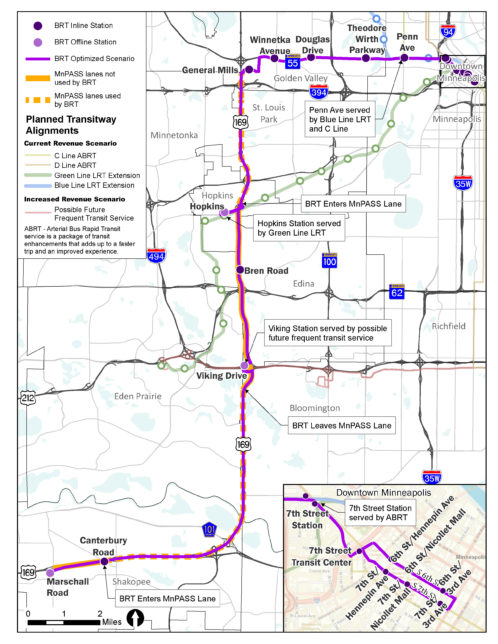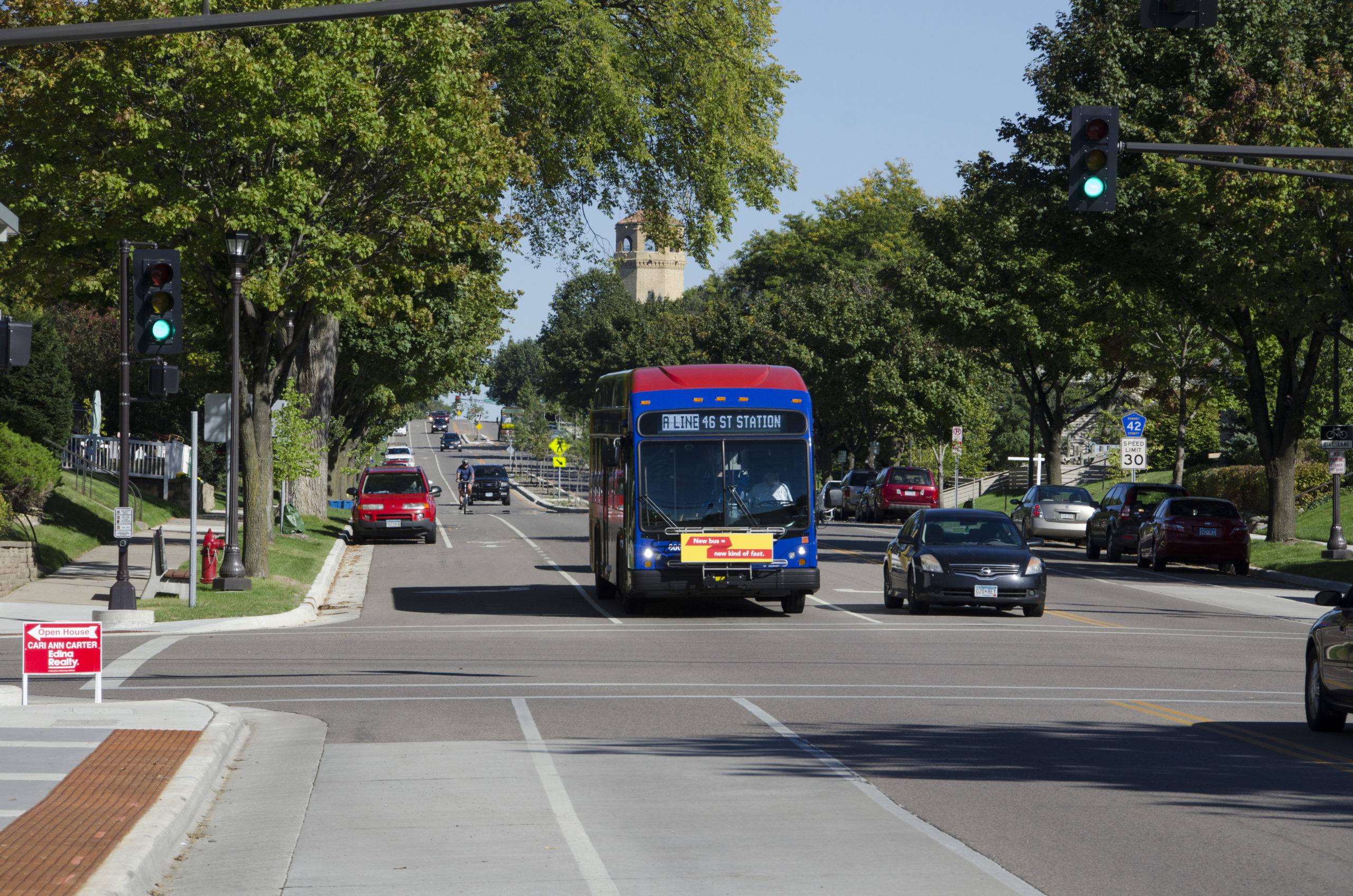Improving Mobility Through Transit and Tolling Solutions
The Highway 169 Mobility Study represents a critical collaboration between MnDOT, the Metropolitan Council, and Scott County to enhance transportation options and reduce congestion along one of the most heavily traveled corridors in the southwest Twin Cities metro area. With increasing pressure on infrastructure due to population and economic growth, the study aimed to evaluate the feasibility of bus rapid transit (BRT) and MnPASS high-occupancy toll (HOT) lanes along the Highway 169 corridor.
SRF led this interdisciplinary effort, bringing expertise in transit planning, traffic engineering, GIS-based analysis, and managed lane alternatives. The scope included a comprehensive evaluation of current and future conditions, alternative development, and implementation planning.
A Data-Driven Approach to Corridor Planning
A key component of the project was a market and mobility analysis that leveraged real-world movement data to understand traffic and transit demand. SRF’s data team utilized INRIX Trips and Waypoints—with over 1.6 million recorded trips and 250 million waypoints—to reveal travel behavior, identify bottlenecks, and prioritize improvements.
This dataset allowed the team to:
- Map select link travel patterns and trip origin-destination pairs
- Analyze route diversion potential for future toll lanes
- Identify clusters of high-demand destinations
- Assess ramp-to-ramp traffic behavior
- Evaluate BRT station area markets and transit viability
This analytics-driven approach helped stakeholders clearly understand existing conditions and assess the impact of managed lane and transit investments with confidence.
Recommendations for Managed Lanes and Bus Rapid Transit
The study concluded with a phased implementation plan recommending a mix of MnPASS express lanes, BRT infrastructure, and intersection improvements to ease congestion and improve corridor mobility. These recommendations support goals outlined in the region’s long-range transportation plan and provide a roadmap for future funding and construction.
Mankato to Twin Cities Intercity Bus Study
As a parallel initiative, SRF also led the Intercity Bus Feasibility Study for the Highway 169 corridor between Mankato and the Twin Cities. This corridor plays a vital role in connecting communities, supporting interregional commerce, and serving students and workers commuting to educational institutions and business hubs.
SRF’s role included:
- Identifying service gaps and key destinations along the corridor
- Evaluating intercity travel markets and ridership potential
- Engaging stakeholders and the public for input
- Recommending short- and long-term transit service options
The result was a strategic framework for implementing intercity bus service along Highway 169, including potential station locations and route alignments.
Impact and Next Steps
The Highway 169 studies represent a forward-thinking approach to improving mobility through multimodal planning, managed lane implementation, and data-informed decision-making. Together, these projects position the Highway 169 corridor as a modern, flexible, and accessible transportation route for both daily commuters and intercity travelers in Minnesota.
Resource Links:
Highway 169 Mobility Study – Executive Summary
MnDOT – Minnesota Department of Transportation
Metropolitan Council Transportation Planning
Internal Category:
Transit Planning, Design & Implementation
More from:
Minneapolis, MN
Saint Paul, MN


